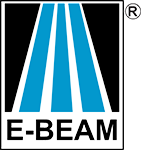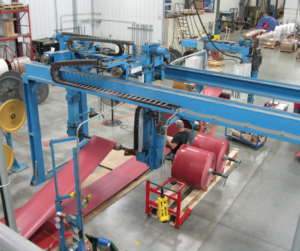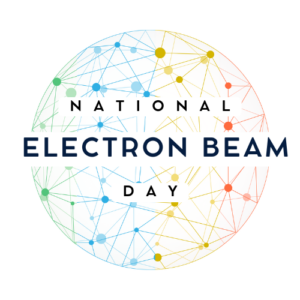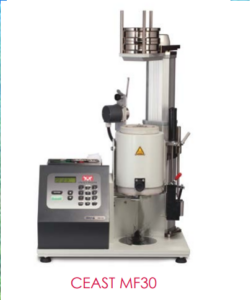Join the E-BEAM Tech Services duo of Olivia Radcliffe and Dr. Gustavo Varca as they explore some of your FAQs.
Olivia: All right. Hey everyone. I’m Olivia Radcliffe. For those of you who don’t know me, I’m the Marketing and Technical Services specialist at E-BEAM. So chances are, you’ve talked to me at some point or another in your product development journey. And I am here with my colleague from our New Jersey facility, Dr. Gustavo Varca, and we just kind of jumped on to answer some questions we’ve been getting a lot lately, make sure that everyone has the right information out there.
So, Gustavo, I will let you go ahead and tell us a little bit about yourself and what you do at E-BEAM.
Gustavo: Thank you, Olivia. Hello everyone. I am Dr. Varca. I am the New Applications Development Manager at E-BEAM Services, and I am a specialist in radiation technologies.
So I’m here to try to elucidate a little bit. And answer a couple of questions you guys may have had while looking for electron beam options for your product.
Olivia: So let me pull up some of the questions we got here. All right. So Gustavo, if it’s okay with you, I’m just going to read out some of the questions and let you answer rapid-fire. We’ll just go for it.
Gustavo: Fine by me.
1. How does e-beam crosslink materials?
Olivia: Okay. Question number one. How does e-beam crosslink materials?
Gustavo: Oh, that’s a very nice question. I’ll try to summarize it in a couple of words. With the energy levels our machines operate at, we manage to deliver high-energy electrons to the products and we induce some changes at the structural level – at the molecular level – while we when we transfer this energy at to a product (when it comes to a solid product). We induce reactions, and the material tends to recombine. During this recombination process, you may induce crosslinking once you tune and you define the right dose, right processing conditions.
And that’s how you can lead to material modification in terms of get giving desired properties to the products.
Olivia: But not all polymers crosslink, some crosslink more readily than others. Some don’t.
Gustavo: You’re absolutely right. It’s always a competition between crosslinking and degradation. Crosslinking to us means new bonds, new linkages being formed. While on the other hand, chain scissioning means we’re actually degrading, we’re destroying connections at the molecular level.
So you always have both, but we tend to control it and promote one over the other. So some polymers are more sensitive. Others are not, but we do know how to overcome that. Most of the time.
Olivia: Here’s a link to a document that outlines some common polymers and whether they are more likely to crosslink or chain-scission.
2. How does e-beam sterilize products?
Olivia: All right. Question number two. We’re going on the other side of the board here – how does e-beam sterilize products?
Gustavo: So interestingly it’s again by the energy transfer via what we call a direct effect. The high energy levels we transfer to the product, which we understand as dose, right? We deliver a certain amount of dose, a certain amount of energy to the product.
And we manage to destroy vital organelles to microorganisms. There are multiple types of organelles, including DNA. Once we do that, we may just impair the microbial growth cycle or replication cycle, or we actually ended up killing them all.
And, and by understanding the bioburden levels and delivering the right dose, we manage not only to remove all the microorganisms there, but we also achieve what we call the sterility assurance level, which is what is acceptable to call a product sterile.
If it’s a liquid, we also have the interactive effects, which means the liquid solvent creates radicals, which will then perform this change as specified, which will trigger different molecules, macromolecules inside the microorganism. But the effect will be very similar.
3. How do you protect pharmaceuticals from degradation during the sterilization process?
Olivia: Okay, cool. So here’s the question along the lines of sterilization. So how do we protect drugs and pharmaceuticals from degradation during the sterilization process?
Gustavo: Well, that’s a very nice question because with a multitude of pharmaceuticals there, there’s no Jack of all trades. We really have to take into account what drug it is, where is radiation going to hit? And then we can protect it where there are some, you know, general ways of doing that.
We can use scavengers, we can use temperature, we can control how fast or how slow we deliver the energy to the product. So it really varies case by case, but we have multiple tools to overcome that if it’s a product that is very sensitive. Usually, if we know the degradation comes from oxidation or from reduction, we just add a scavenger to block that effect. Sometimes we just reduce the indirect effects by freezing the product or beaming it too fast in a way that we don’t allow oxygen to diffuse and induce degradation.
So those are just a couple of ways. I’m trying to make it very simple, but we could spend a whole afternoon here or a day still talking about how to overcome degradation.
Olivia: When, when you say temperature, you mean cold, right? We don’t ever heat anything up?
Gustavo: Well, we could. Temperature control can work both ways. We can process it in a frozen state, you know, below below water freezing temperature, or we can also work above because as we play with temperature, we change the interaction between the gasses and the material and the radical formation.
So sometimes we may want to bring the temperature to a lower level where we can freeze it and keep everything very localized.
But on the other hand, we may use temperature to avoid gas. For example, in liquids, the high temperature can actually benefit us by removing the oxygen from the liquid. And that way we avoid any oxygen-derived radicals that could be detrimental to the product we are trying to sterilize.
4. How is e-beam used to process pet bedding and other pet supplies?
Olivia: Good answer. All right, question number, whatever we’re on! Four.
Oh, they want us to talk about electron beam processing for pet bedding and pet supplies and things like that.
Gustavo: Well, that’s a pretty interesting case. I think people don’t realize how much electron beam can be part of their daily lives, sometimes directly or indirectly.
We have a special type of processing called bioreduction, which is some sort of controlling the bioburden of the product.
We’re not necessarily, or we may be reaching sterility levels, but we’re not looking for it. We’re just trying to decrease the level of contamination or bioburden. And that’s how we call it.
That can work for pet bedding, pet food, for instance. And it’s a very similar process for when we do sterilization or when we do material modification, we just deliver the energy and it’s got to be enough energy to guarantee that we have reduced microbial load. Of course, that is followed by multiple tests, microbial tests in that sense.
But interestingly, there’s something that really makes my eyes shine a little bit. It’s one of the things that I find most intriguing when it comes to radiation technologies. Radiation allows us to have what we call a simultaneous crosslinking and sterilization effect. In some materials, at the same dose, we manage to provide material modification and sterilization in a single step.
And, as unique as it is, using electron beam, we can deliver that inside the final packaging. So that’s really interesting. Not specifically for pet bedding and pet-derived materials, but I just wanted to make sure I bring that up because every time I talk about radiation, I can’t speak enough about a simultaneous crosslinking and sterilization.
Olivia: What’s the benefit to that though?
Gustavo: Well you would have less steps for modifying a product. It would cost less. You don’t need to have chemical reagents or crosslinkers. You just use energy and the material itself. So you induce both at once. So it’s a very unique and elegant process. If I may say.
Olivia: So improve mechanical properties and sterilize at the same time.
Gustavo: Yes, yes. Of course we wouldn’t do that to pet bedding, but who knows, right? Our customers make great products.
5. Does my product become radioactive during processing?
Olivia: Nicely put. Okay. So this one is one we’ve gotten before. So does my product become radioactive during processing?
Gustavo: It’s been 13 years since I started studying radiation technology. That’s part of my daily activities. And I’ve been answering this question in multiple and several ways, but it always comes up. So I’m glad somebody asked because we’ve got to get it. We’ve got to deliver the message.
At the energy levels our machines operate at, as I said, in the beginning of this video, the changes we can do are at the molecular level, not at a nuclear level. If we wanted to induce activity, if we wanted to make a non-radioactive material become a radioactive material, we would need to alter the nucleus of the matter.
The energy levels our machines operate at do not allow us to get there. So, what I’m saying is the same way as you put a food in your microwave and the food doesn’t come out microwave active, when we processed material under the beam, there’s no way they’re going to come out radioactive.
Otherwise we would be also reaching lots of isotopes in our facility, and that doesn’t happen. Of course, like every rule, there are exceptions. Some compounds may have some short lifetime radioactivity, but those are very well known, very well categorized. And they’re not usually called radiation-friendly materials to be processed.
So it’s unlikely and very, very unlikely that when we beam your product, it is going to become radioactive. If that happens, we may be looking for a Nobel prize. I would say.
6. What would you recommend for how to package a powdered pharmaceutical product for sterilization?
Olivia: Sounds good. Okay. A question about pharmaceuticals again, powdered product. Any recommendations for packaging a powdered pharmaceutical for sterilization?
Gustavo: So that question is really interesting because when I started, I always felt like, you know, it’s electron beam, so it’s not like other types of radiation that are photon-based based and they can travel through matter, right? It’s actually a particle electron and it has mass, so it stops as it enters into matter.
So when I started, especially when I started at E-BEAM Services, I always had in mind that the shape and the forms of the boxes had to be very specific. After being here a couple of years, I realized that even lead may not impose a threat when we beam products.
So, ideally, we try to minimize the density and try to find the best way for the beam to see the product. So we would always be looking towards the less-dense region of the case, but we tend to have overcome issues we have encountered in the past and through repackaging or through, you know, some machine changes and process changes. We have managed to overcome that.
But if the customer is coming to us with a 50-pound bag and is like one-foot square, obviously that’s too much. It may be even too much for photons.
So there’s always a way of doing that. We just gotta be mindful that we’ve got to make sure we are able to deliver electrons throughout the product. So a couple of years ago, I would say, well, that’s not an ideal scenario, nowadays I say, we got to try it because most likely we’re going to succeed.
I’m pretty sure you may have some input on that too, because you work on a lot of other products I’ve heard.
Olivia: Just a bit, but I think you said it very well. I think the big thing is that it’s not a one-stop-shop for everything. We are very customized to each of our customers’ different products, and that includes powdered pharmaceuticals, medical devices, and then along the polymer modification side as well.
Gustavo: Yeah, and also a lot of times we help them achieve the best configuration that would help us deliver the dose and also meet the logistical needs of the customer.
Olivia: Right. Absolutely. Absolutely. That’s it for our questions. I think this worked out well! I think we should jump on and do this again sometime, Gustavo, as we get questions in. So if anyone has any questions you have about e-beam processing or sterilization or Dr. Varca himself, submit your questions here. All right. We’ll see you later!



